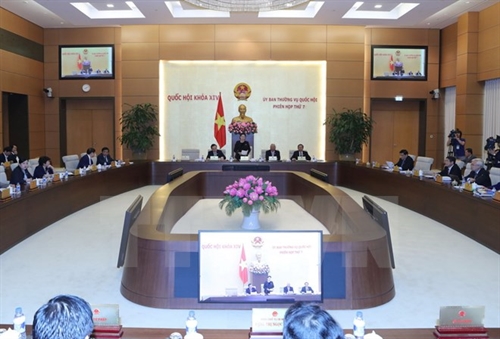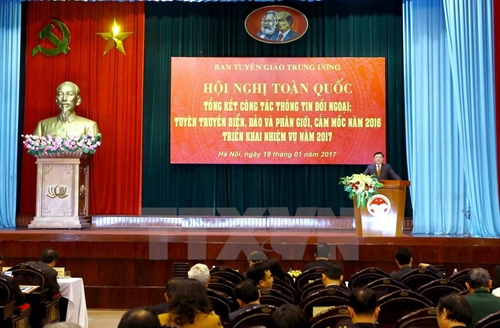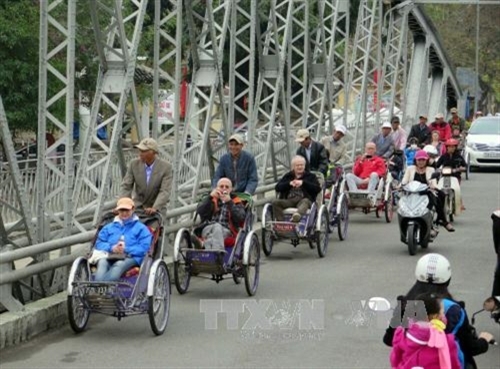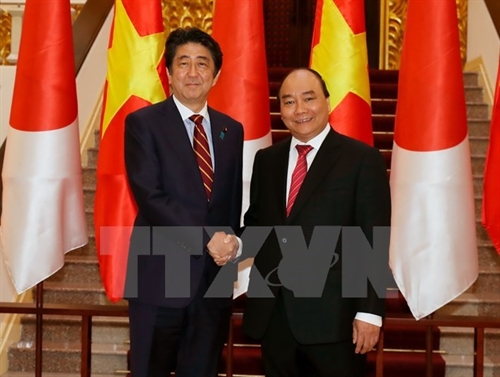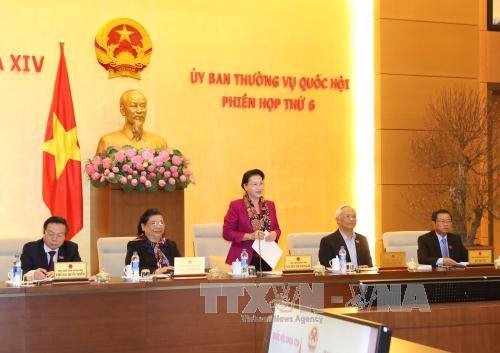The Government has issued an action program to implement the policies on economic restructuring and building of a new growth model for the period between 2016 and 2020.
In November 2016, the National Assembly adopted resolutions on policies to renovate the growth model measured by labor productivity, and the quality and competitiveness of the national economy, as well as the economic restructuring scheme for the period between 2016 and 2020.
Key tasks and measures in the action program are aimed at improving the effectiveness and efficiency of the macroeconomic management.
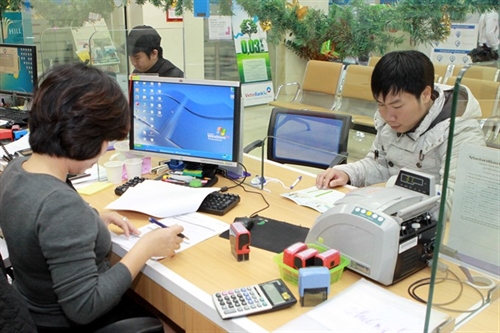 |
| The action program specifies tasks to reform the national financial market with a focus on credit institutions__Photo: VNA |
The Government has requested ministries, especially the Ministries of Planning and Investment, Finance, Industry and Trade, and Foreign Affairs and the State Bank of Vietnam, and other relevant agencies to closely coordinate to regulate and manage policies flexibly and effectively to ensure economic stability and achievement of targets.
The policy has identified key goals of consolidating macroeconomic foundations, keeping the average inflation rate below 5 percent per year and bringing down the overspending by the State to below 3.5 percent of the GDP by 2020.
Public debts, Government debts and the country’s foreign debts will not exceed 65 percent, 54 percent and 50 percent, respectively, of the annual GDP between 2016 and 2020. By 2030, these targets will be reduced to 60 percent, 50 percent and 45 percent of the GDP, respectively.
To realize these goals, the central bank has been urged to adopt flexible and effective monetary policy initiatives to regulate the interest rate and exchange rate policies, and manage forex and gold markets, in line with market principles for economic development.
The central bank is required to build the anti-dollarization scheme and submit it to Prime Minister Nguyen Xuan Phuc by the first quarter of this year.
The Ministry of Finance is responsible for supervising the implementation of revenue collection in localities, sectors and industries at all levels. It has been asked to control Government expenditure in all sectors, localities and agencies, and ensure the development expenditure is at a rational rate of 25 percent to 26 percent of the total Government spending.
Concerning the plan to borrow and repay public debt between 2016 and 2020, the ministry has been urged to monitor the efficiency of public debt, as well as restructure the borrowing towards increasing the lending of loans and granting of aids in the official development assistance (ODA) structure, reducing the Government guarantee for new loans, as well as control borrowing of local governments to ensure national financial security.
Financial market reform
The action program specifies tasks and measures to reform the national financial markets with a focus on credit institutions. It asks the central bank to continue practising healthy financial position and improve governance of credit institutions, gradually eliminate cross-ownership in related institutions, speed up banks’ divestiture in non-core businesses and push up the bad-debt restructuring process.
By 2020, the ratio of bad debts in balance sheets of credit institutions and bad debts sold to the Vietnam Asset Management Company and classified bad debts must be reduced to below 3 percent.
In the next three years, at least 12 to 15 commercial banks must apply equity capital ratio under Basel II standards.
Capital sizes of the stocks, government bonds and insurance markets are targeted to rise to 70 percent, 30 percent and 40 percent, respectively, of the annual GDP by 2020.
Accelerating the SOE restructuring
The Government has asked the Ministry of Finance to complete the project on restructuring state-owned enterprises (SOEs), with the focus on big economic groups and corporations, between 2016 and 2020, and submit it to the Government by the first quarter of this year.
Ending March, the Ministry of Planning and Investment is also required to propose to the Government the detailed list of sectors and industries using State capital and set up a body to take charge of the State capital in SOEs.
Before the end of June, ministries, local governments and State economic groups and corporations must review and make reports on prolonged loss-making projects and propose measures to control the same. Relevant authorities must announce the list of enterprises in which the State does not need to hold more than 50 percent of their capital and build divestment roadmap.
State economic groups and corporations must construct their comprehensive overhauling scheme during the 2016 to 2020 period with a vision for 2025, including their ownership structure, business lines, and technology and management innovation.
Building clean and hi-tech agricultural sector
The Government has asked the Ministry of Agricultural and Rural Development to collaborate with other ministries and localities to develop the country’s agricultural production to make it clean and environmental friendly by applying the latest technology.
The ministry needs a review and renovation of agricultural production in each region to promote local advantages, build high-value products, as well as ensure sustainable sources of raw material for the agricultural processing industry.
Effective models of new agricultural production such as collaboration between producer-processor-sale model and linkage between domestic and foreign distribution systems should be enhanced and duplicated.
Effective measures should be employed to achieve the national targets set for the constructions of new rural areas, while also ensuring that 50 percent of rural communes satisfy new rural social standards by 2020.
Other key tasks and measures have also been identified to develop the industrial, private and public sectors.
The action program provides guidelines and measures to implement Resolution 05-NQ/TW and Resolution 24/2016/QH14 of November 2016 on building growth model and restructuring of the economy in the period between 2016 and 2020._ (VNS/VLLF)

